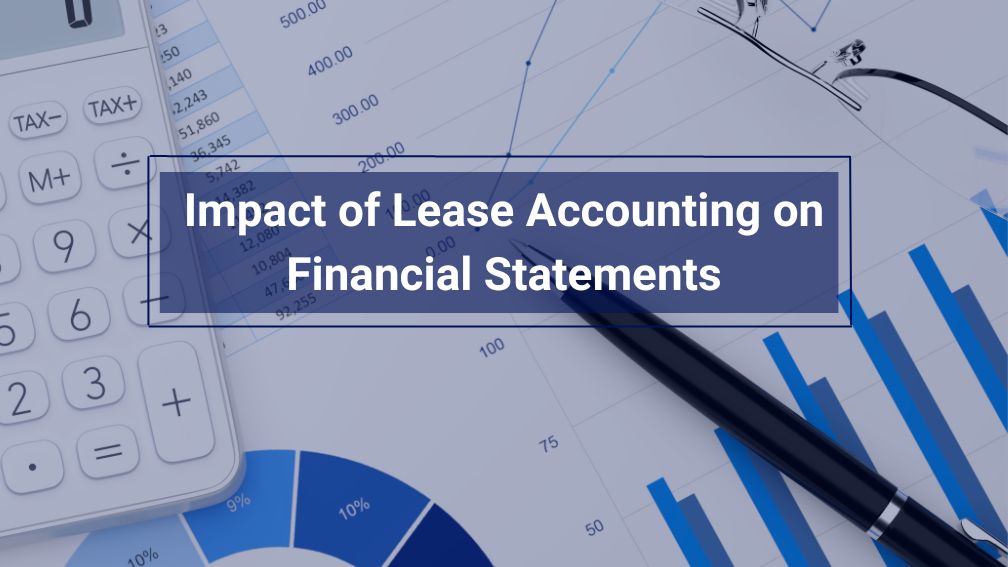The Impact of Lease Accounting on Financial Statements
Last Updated on September 8, 2023 by Morgan Beard
Leases play a pivotal role in many organizations, providing access to assets ranging from office spaces to manufacturing equipment. With the implementation of lease accounting standards, particularly the way leases are reported on financial statements has undergone significant changes. FASB’s Accounting Standards Codification (ASC) 842 under GAAP accounting created updated accounting treatments for commercial lease and service agreements. Let’s delve into the impact of lease accounting on financial statements and how these changes can affect an organization’s financial landscape.
Balancing the Books: ASC 842 at a Glance
ASC 842 was introduced to enhance transparency in lease reporting and to align financial statements more closely with economic reality. Prior to its implementation, leases were classified as either operating or capital leases, with only capital leases recognized on the balance sheet. This often led to off-balance sheet financing, where significant lease obligations were hidden from stakeholders.
Under ASC 842, most leases—both operating and finance—are now required to be recognized on the balance sheet. This recognition involves the creation of both lease liabilities and corresponding right-of-use (ROU) assets. This shift aims to provide a more accurate representation of an organization’s financial position, allowing stakeholders to better assess its obligations, resources and an asset’s fair market value.
Impact on Balance Sheet: Liabilities and Assets
Lease Liabilities:
Lease liabilities represent the present value of future lease payments. ASC 842 requires organizations to estimate the future payments, discount them back to present value, and record them as a liability on the balance sheet. This inclusion reflects the organization’s contractual obligations and financial commitments.
Right-of-Use (ROU) Assets:
Simultaneously, the organization recognizes a ROU asset. This amount is the lease liability, adjusted for initial direct costs, prepaid rent, and any incentives received from the lessor. This asset represents the organization’s right to use the leased asset over the lease term. The ROU asset gradually decreases through amortization over the lease term, reflecting the consumption of the asset’s economic benefits.
Income Statement Impact: Expense Recognition
The implementation of ASC 842 also affects the way lease expenses are recognized in the income statement. Previously, operating lease expenses were recognized evenly over the lease term, while finance leases incurred interest and amortization expenses.
Under ASC 842, operating leases continue to generate a straight-line expense pattern, while finance leases result in front-loaded interest expenses and amortization of the ROU asset over time. This can lead to variations in expense recognition depending on the lease type.
Cash Flow Statement Implications
ASC 842 does not impact the classification of lease payments within the cash flow statement. Cash flows related to principal payments on the lease liability are classified as financing activities, while interest payments are classified as operating activities.
Impact on Financial Ratios and Metrics
The inclusion of lease liabilities and ROU assets on the balance sheet can impact various financial ratios and metrics. Debt ratios, such as debt-to-equity and debt-to-assets, are likely to increase due to the addition of lease liabilities. Similarly, metrics like return on assets (ROA) and return on equity (ROE) could experience fluctuations due to changes in both assets and liabilities.
Stakeholder Considerations
The changes brought about by ASC 842 have implications for various stakeholders:
Investors and Creditors:
With a clearer view of lease obligations, investors and creditors gain a better understanding of an organization’s financial risk and stability.
Executives and Management:
Organizations need to plan for the financial implications of new lease accounting. Lease-versus-buy decisions, lease negotiation strategies, and portfolio management may all require adjustments.
Analysts:
Financial analysts must factor in lease-related changes when evaluating an organization’s performance and making investment recommendations.
Impact of lease accounting on financial statements
The impact of lease accounting on financial statements is substantial. These lease obligations have a quantitative balance sheet impact. The standard enhances transparency, reduces off-balance sheet financing, and provides stakeholders with a more accurate portrayal of an organization’s financial position. While the changes may require adjustments in financial reporting and decision-making processes, they ultimately contribute to a more informed and comprehensive understanding of an organization’s financial health.
Lease Accounting Resources
Check out our resource hub. We have the templates, spreadsheets, and calculators to help you manage entire lease lifecycle.
